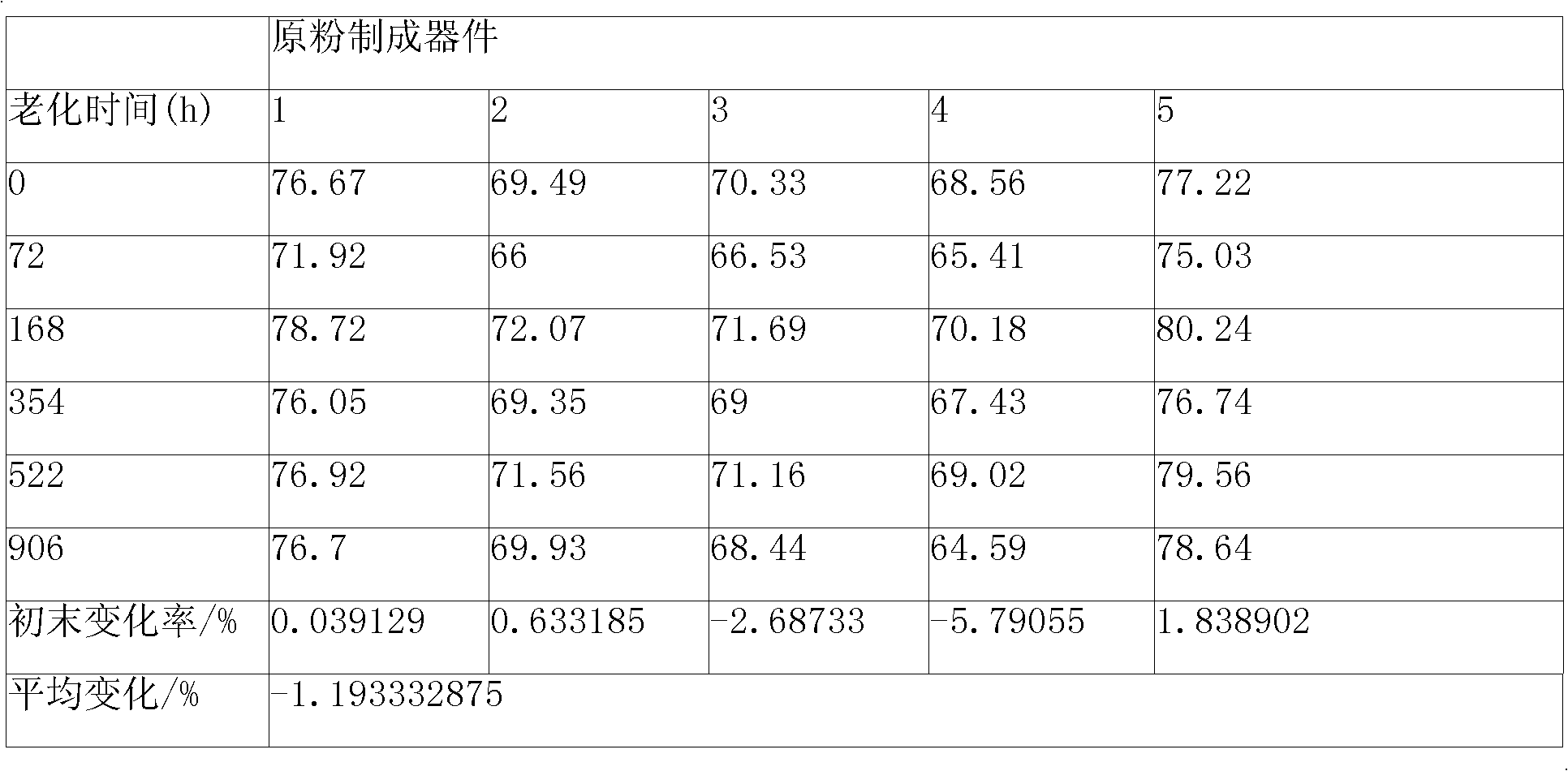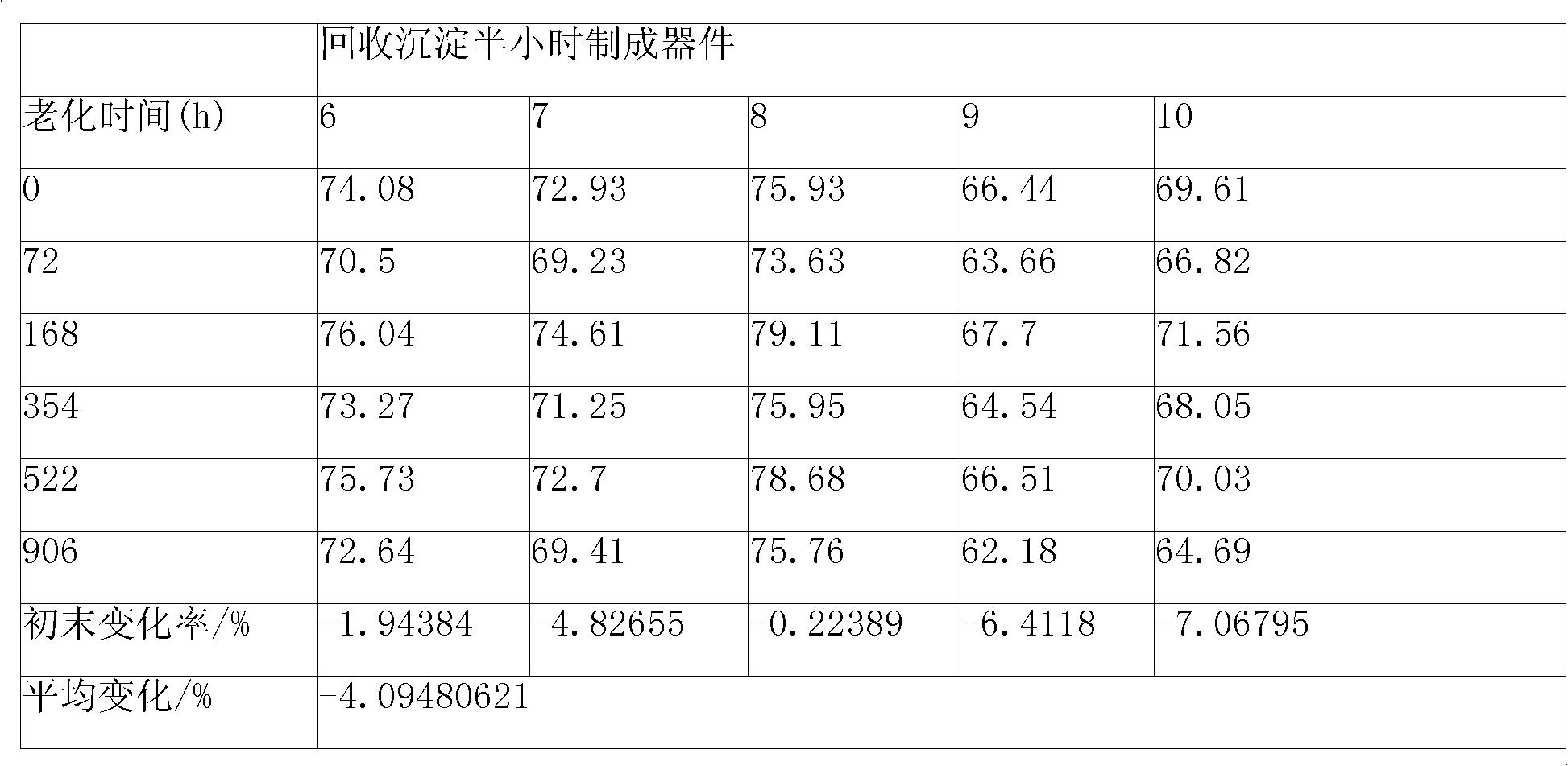Method for recovering fluorescent powders of light emitting diode
A technology for light-emitting diodes and phosphors, applied in the directions of luminescent materials, recycling technologies, chemical instruments and methods, etc., can solve the problems of phosphor waste, environmental pollution, phosphor precipitation, etc., and achieve the goal of reducing production costs and reducing environmental pollution. Effect
- Summary
- Abstract
- Description
- Claims
- Application Information
AI Technical Summary
Problems solved by technology
Method used
Image
Examples
Embodiment 1
[0033] The masses of silica gel and phosphor powder in the fluorescent glue prepared at a certain time are 6g and 2.028g respectively. After production according to the production requirements, the remaining fluorescent glue is 2.75g, and the remaining fluorescent glue is recovered according to the following method:
[0034] (1), cleaning:
[0035] Add 6g of cleaning agent methyl siloxane (OS-20) to the fluorescent glue mixed with fluorescent powder, stir for 2~3min, and let it stand for 1 hour under normal temperature and pressure. The fluorescent powder suspended in the cleaning agent settles on due to gravity. At the bottom of the container, solid-liquid separation is performed, and the cleaning agent methylsiloxane is removed to obtain solid phosphor;
[0036] Then add 6 g of the cleaning agent methyl siloxane (OS-20) to the obtained solid and repeat the washing. The washing method is the same as before, and the washing is repeated 3 times to remove the colloid in the fluorescent...
Embodiment 2
[0041] The masses of epoxy resin and phosphor powder in a prepared fluorescent glue are 13g and 3.575g respectively. After production according to the production requirements, the remaining fluorescent glue is 3.82g, and the remaining fluorescent glue is recovered according to the following method:
[0042] (1), cleaning:
[0043] Add 8g of cleaning agent acetone to the fluorescent glue mixed with fluorescent powder, stir for 10-15 minutes, and let stand for 30 minutes under normal temperature and pressure. The fluorescent powder suspended in the cleaning agent settles at the bottom of the container due to gravity, and the solid-liquid separation is removed for cleaning. 8g acetone to obtain solid phosphor;
[0044] Then add the cleaning agent acetone to the obtained solid, and repeat the washing. The washing method is the same as before, and the washing is repeated 5 times to remove the colloid in the fluorescent glue to obtain the phosphor;
[0045] (2) Drying:
[0046] The phosphor ...
Embodiment 3
[0049] The masses of silica gel and phosphor powder in the fluorescent glue prepared at a certain time are 6g and 2.028g respectively. After production according to the production requirements, the remaining fluorescent glue is 2.426g, and the remaining fluorescent glue is recovered according to the following method:
[0050] (1), cleaning:
[0051] Add 6g of cleaning agent methylsiloxane (OS-20) to the fluorescent glue mixed with fluorescent powder, stir for 20±2min, put the container in the centrifuge, set the speed to 5000r / min, the time is 90s, and suspend in The fluorescent powder in the cleaning agent is deposited on the bottom of the container due to the centrifugal force, and the solid-liquid separation is performed. 6g of the cleaning agent methylsiloxane is removed to obtain the solid fluorescent powder;
[0052] Then add the cleaning agent methylsiloxane (OS-20) to the obtained solid, and repeat the washing. The washing method is the same as before, and the washing is repe...
PUM
 Login to View More
Login to View More Abstract
Description
Claims
Application Information
 Login to View More
Login to View More - R&D Engineer
- R&D Manager
- IP Professional
- Industry Leading Data Capabilities
- Powerful AI technology
- Patent DNA Extraction
Browse by: Latest US Patents, China's latest patents, Technical Efficacy Thesaurus, Application Domain, Technology Topic, Popular Technical Reports.
© 2024 PatSnap. All rights reserved.Legal|Privacy policy|Modern Slavery Act Transparency Statement|Sitemap|About US| Contact US: help@patsnap.com










